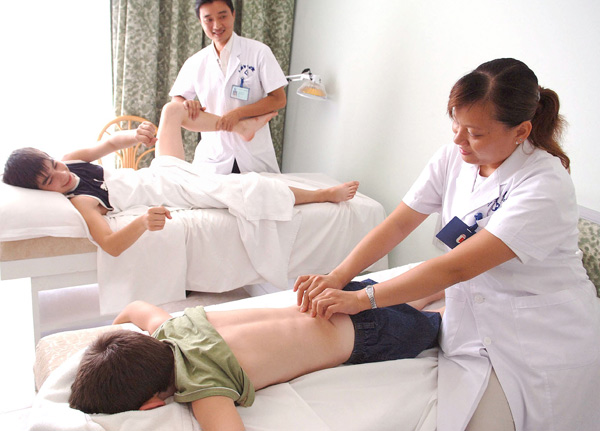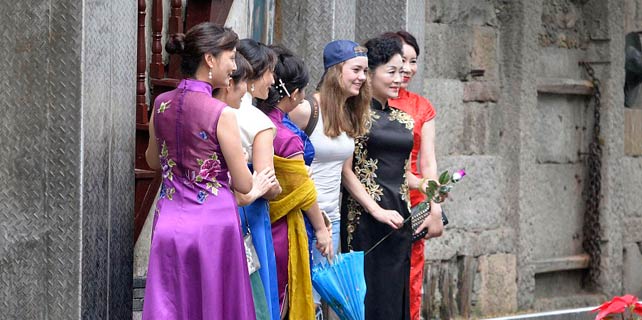China, the emerging medical tourism hot spot
 |
|
Two boys from Russia enjoy the traditional Chinese medicine therapy including acupuncture and massage in Haikou, Hainan province. ZHAO YINGQUAN / XINHUA |
Hainan, Xinjiang and Beijing show TCM promotion could attract wellness consumers from around the world
HAIKOU-Svetlana Shipetko and her two sons did not just come to South China's tropical island of Hainan to escape the freezing Siberian weather. Shipetko had an equally important goal-to ease her lower back pain.
Instead of prescribing painkillers, Shipetko's Chinese doctor Tang Yi performed the traditional Chinese therapy of "tuina", which literally means "push-and-pinch."
Every morning, Shipetko received the therapy at the Sanya Hospital of Traditional Chinese Medicine, then spent the rest of the day bathing in the sun.
"It is great," she told Xinhua through an interpreter. "No pills, no injections, but I feel much better."
Shipetko is one of tens of thousands of Russians who flock to Hainan every year. The island province has received 800,000 Russian tourists in the past seven years.
Almost 80 percent of them tried some form of traditional Chinese therapy during their stay-either to treat a particular ailment or simply for wellness, health authorities said.
Rooted in ancient Chinese philosophy, traditional Chinese medicine, also called TCM, has in recent years gained popularity in a world dominated by modern Western medicine.
Clinics have proliferated outside of China, but many face challenges such as getting herbs across the border or luring experienced professionals to work overseas.
As a result, more foreigners are coming to China for TCM treatment or therapy.
The boom is particularly felt in Sanya, where Russian-language advertisements for acupuncture pop up across the city.
Global flow
International medical tourism became popular in the mid-20th century with wealthy European and North American patients traveling abroad for cosmetic surgery sprees.
In the markets that first responded to the demand, such as Brazil, South Africa, and Costa Rica, a variety of modestly priced procedures were offered.
The sector flourished with the rise of quality health care, commercial aviation, and the internet. It is now a multibillion-dollar industry.
US-based industry resource company Patients Beyond Borders estimates that between 9.8 million and 14.8 million patients visited overseas hospitals and clinics in 2016.
People are tempted by lower costs, quality care, improved patient experience, specialty treatments, and the lure of "the new and different," according to the company.
It said that in 2013 alone, more than 900,000 US nationals headed overseas for "nearly every imaginable type" of medical treatment: weight loss surgery in Mexico, heart valve replacements in Thailand, hip resurfacing and traditional treatments such as Ayurveda in India, and fertility treatments in Israel.
In Asia, Thailand, Malaysia, Singapore, and the Republic of Korea are the rising stars, drawing a great majority of patients within the region.
"We see a rising market in China," said Patients Beyond Borders CEO Josef Woodman in an email.
He said China can successfully compete with mature markets in the region, as it is strong in TCM treatment and its health care infrastructure is improving fast.









